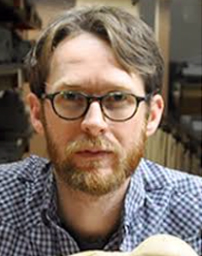Course improvement grant spotlight: “Restoration and rehabilitation of Vanderbilt fossil teaching collection”
Can you tell us briefly about your project and what inspired you to do this project?
The project is a very long overdue project in our department. We have really nice teaching collections of fossils that have accumulated over more than a century. We’ve had this resource in hand for a really long time but it has fallen into neglect and disrepair. Partly I think that’s because the whole way that we catalogue and keep track of and maintain fossils has changed a lot in 100 years since it was started, and I think nobody had the bandwidth to do the complete overhaul that we really need to make these specimens more available to instructors. The idea is to take all these materials that we have and provide a detailed cataloging so future instructors can quickly go to a spreadsheet and see “Here’s our entire collection of relevant fossils, here’s where they’re from, here’s their age, here’s how to find them and where they’re housed,” so they can efficiently and quickly locate them and use them for teaching. That’s the overarching vision and goal.
What is the anticipated impact of this project on students and the Vanderbilt community in general?
The first impact we’ve already started to see is on the students who’ve been helping with the project. It’s been great. I recruited students who I just taught in our Life Through Time class and so they had been learning this material in one form for a whole semester. It was fun to see things that hadn’t dawned on them yet until they were trying to figure out what different fossils were and relate things to each other. I can see how important it is to really interact with these physical materials. So it’s been exciting to see these students who are tasked with trying to do this work, learning about the fossils themselves and also learning about some best practices for this kind of project.
There’s also a handful of classes that we teach that directly tie into this material: the Life Through Time Course, a Mass Extinctions course, Earth Systems Through Time. All of those can and should be using this material. I’m hopeful that I can find ways to also make it accessible to courses in BioSci that might want to use fossils. This is a really nice resource that’s been sequestered away and inaccessible to students and instructors. I think that making it available and known should hopefully have impacts that I don’t even anticipate yet. That’s my dream.
What recommendations do you have for others who would like to apply for the internal teaching grant?
One thing that I have learned in my time here is there are just so many opportunities and resources available. I think just knowing that that those opportunities exist and that you should go looking for them and thinking about how you might use them is the first step. There are so many good opportunities for improving and transforming courses. I would just strongly encourage everybody to look at their teaching and think about how they might approach it differently.
In one or two sentences, how would you capture your teaching philosophy?
I really am at heart a person who’s motivated by curiosity, by inquiry and questioning. I hope that I can connect with students on that level. I want them to see that they can always ask more questions and always go further. The most exciting thing is when a student comes in and says “I just read this thing, or heard this thing, or saw this thing, and it made me think of what we’ve been talking about because it’s connected.” I think trying to foster that sense of curiosity and connection-making is the core of my teaching philosophy.
.
.
.
.
.
.


Leave a Response